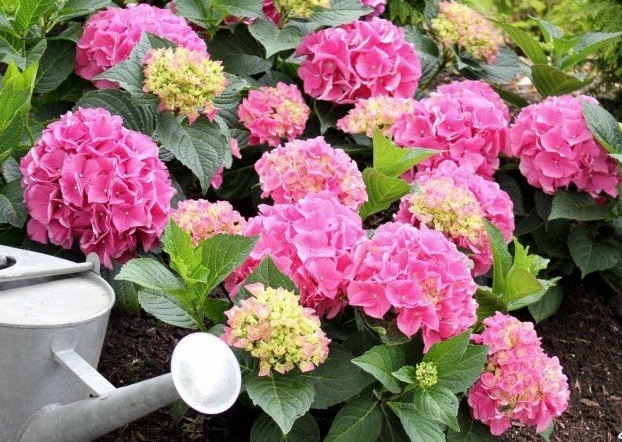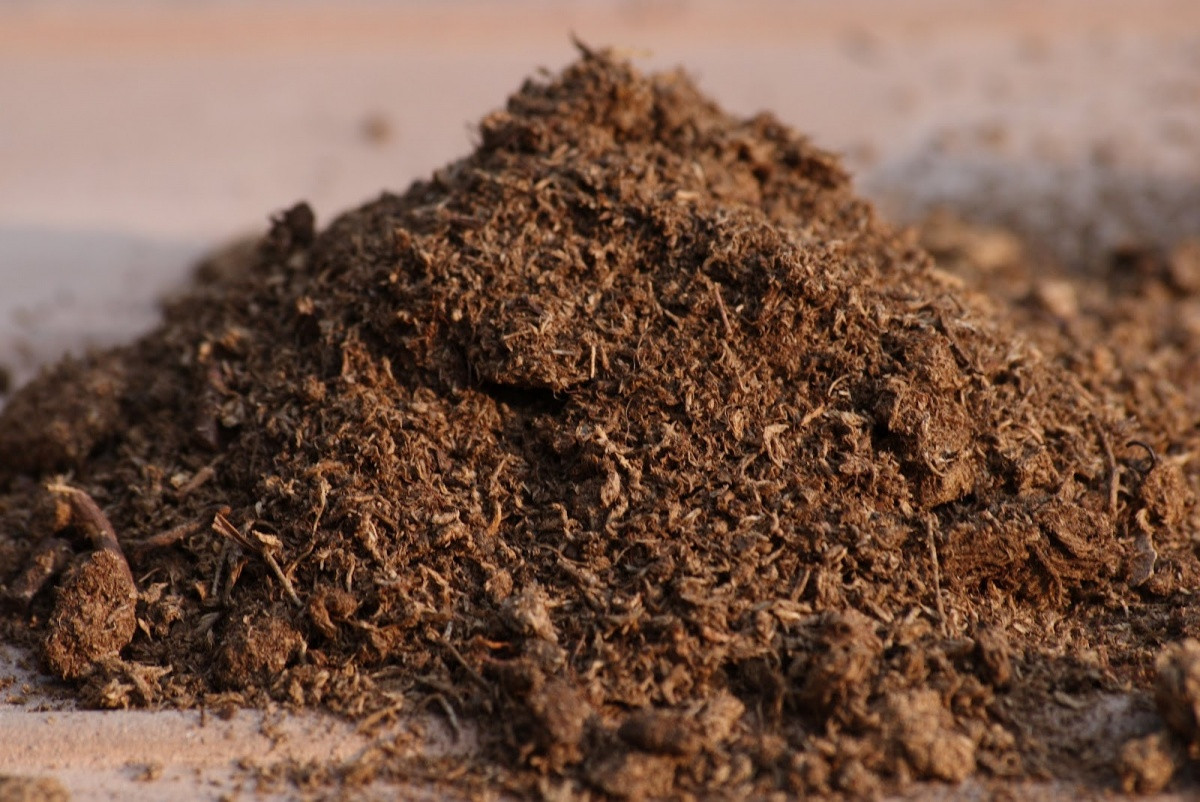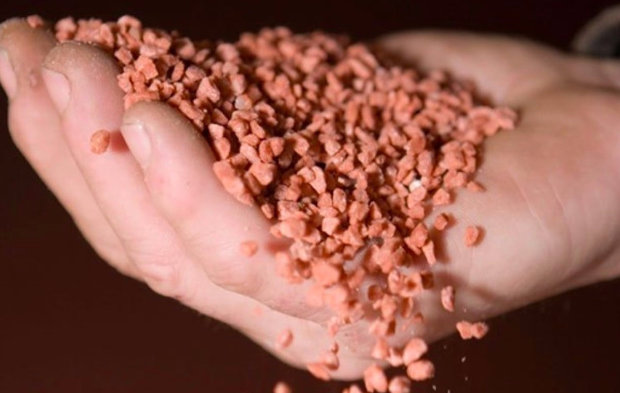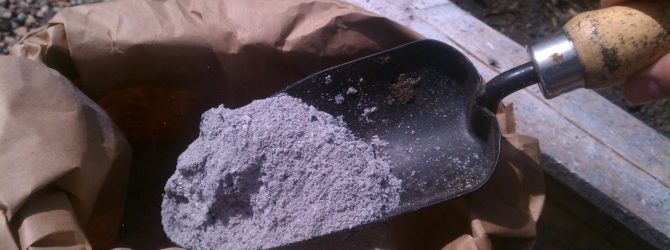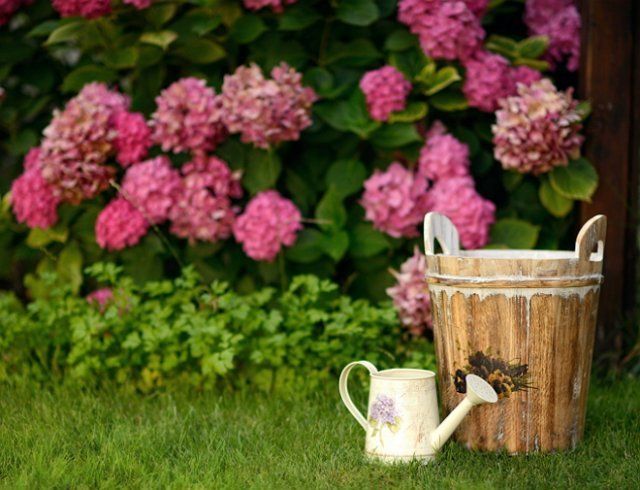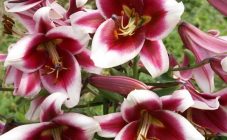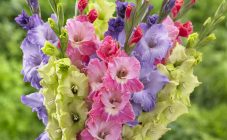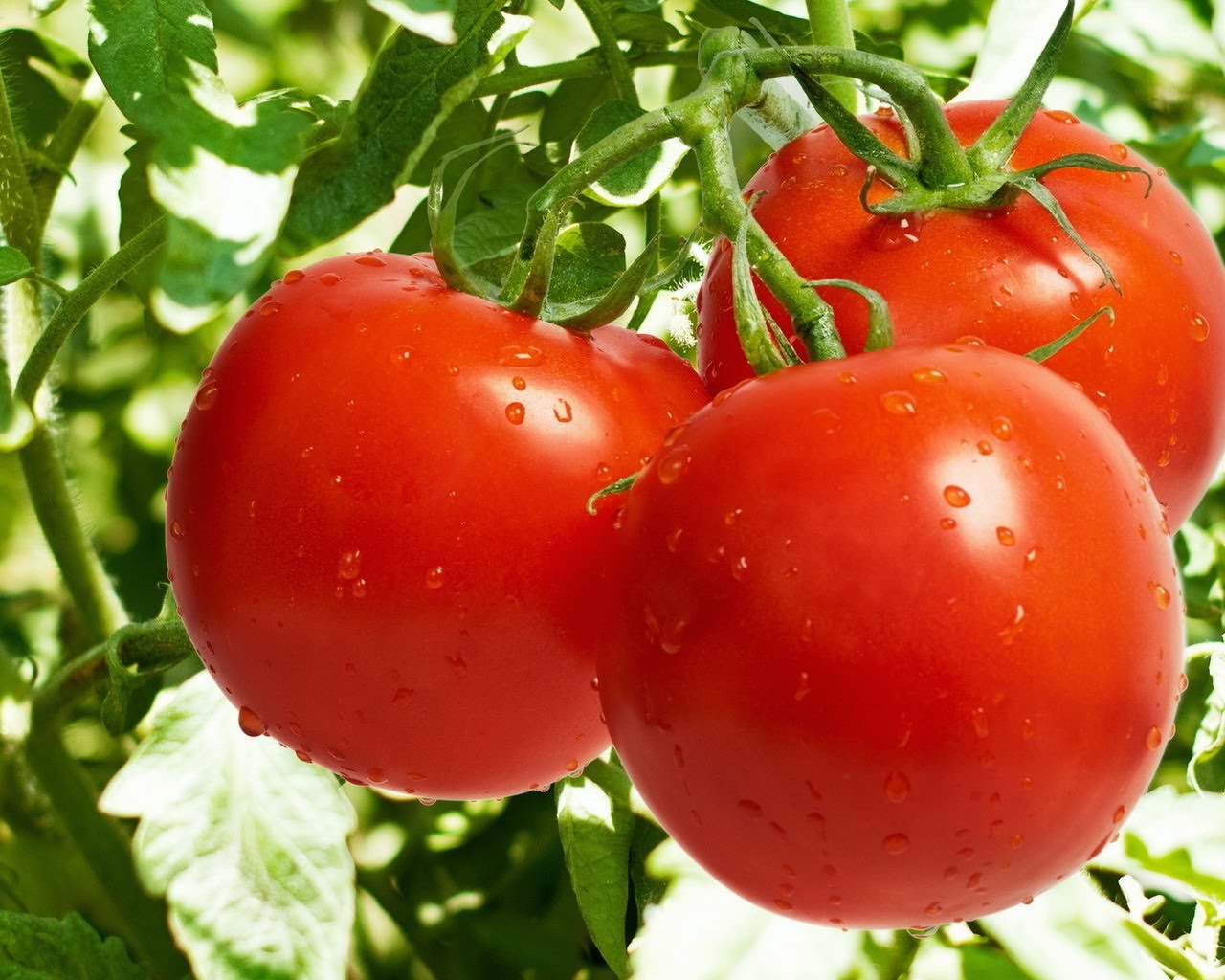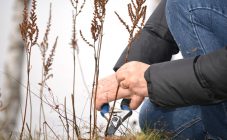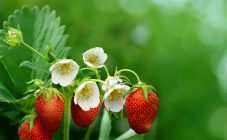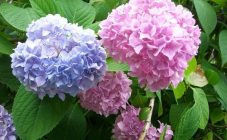Content:
The thermophilic hydrangea was introduced to Europe in the 18th century from Japan. Thanks to the research of breeders, at the end of the 19th century, frost-resistant varieties were bred, now from spring to late autumn in the equipped zones of parks, in the flower beds near the house, hydrangea pleases with flowering. There is an opinion that the flower is unpretentious and needs only frequent watering. It is not true - in order for the hydrangea to show all its splendor, the earth needs to be fertilized. To do this, you need to know how to feed the hydrangea in the summer for lush flowering in the garden, how to care for it in spring and autumn.
Description of culture
Among the types of hydrangea there are shrub plants, small trees, lianas, with spherical and paniculate inflorescences. The most widespread are bush hydrangeas - they decorate flower beds, flower beds. Shrubs and small trees are widely used in landscape design.
All hydrangea varieties need well-moist, acidic soil for growth and flowering. Flowers show themselves in all their glory on the fertile, humus-rich soil, in places located near water bodies. If there are no such natural conditions on the garden plot, they need to be created - without watering, feeding the flower will grow, but its decorative effect will suffer.
For planting hydrangeas, choose a sunny place or partial shade - a place with an openwork shadow from trees and shrubs growing nearby.
Top dressing
Hydrangeas need fertile soil with a high humus content, good air permeability, acidity of about 5.5. If there are no such conditions in the natural environment when growing a flower, the soil is fertilized, artificially acidified, watered.
The first 2 years are not advised to feed the flower, in the future mineral fertilizing is alternated with the introduction of organic fertilizers. The main recommendations for fertilization are as follows:
- apply nitrogen-containing top dressing at intervals of 2 weeks during the spring-mid-summer period, and then stop;
- once a month, water the bush with a weak solution of potassium permanganate (0.2 g per bucket of water);
- during the formation of buds and flowering, feed with fertilizers with potassium;
- from the end of summer, stop feeding.
A hydrangea bush looks luxurious and adorns the garden if the plant is strong and healthy, its flowers are large, and the flowering is long and abundant. To achieve this result, the plant is fed all season.
Top dressing in spring
In the spring, the buds of future leaves and shoots are laid, it is important to know how to properly feed the hydrangea in spring for lush flowering in the garden.The flower for the development of green mass is fed with a nutrient mixture prepared by dissolving in 10 liters of water in a tablespoon of potassium sulfate and urea. The consumption of such a composition is 5 liters per bush. Fertilizer made from slurry is also introduced (it is diluted with water in a ratio of 1:10).
If in early blooming hydrangea the period of bud formation falls on the spring, then mineral fertilizers with potassium and phosphorus are applied under the bush.
Top dressing hydrangeas in summer
During the budding period (for many varieties this is June), hydrangeas are fed for abundant flowering. You can fertilize the ground with a solution prepared from 10 liters of water and added to the liquid in 1 tbsp. l. nitrophoska and Agricola composition.
In the middle of summer, it is necessary to feed so that the peduncles are large and bloom for a long time. Special mineral formulations and natural organic fertilizing are introduced. Due to the peculiarity of the flower, fertilizers should be laid during flowering with new flower buds with a composition rich in nutrients and without nitrogen. Potassium-phosphorus fertilizers (potassium sulfate, superphosphate), organic matter are suitable for feeding at this time.
Plant care continues in the fall. Autumn is the time to feed perennials with essential nutrients to increase their resistance to the coming winter cold. Hydrangea is fed with special formulations of long exposure, universal organic and mineral fertilizers.
Autumn is also the time to prune the plant. It is made for:
- enlargement of inflorescences next year;
- shaping the crown of the bush;
- prevention of breakage of shoots from snow lying on the bush;
- removing old and weak shoots.
Cutting most hydrangeas, like paniculate flowers, is necessary at an outside temperature of +5 to +10 ° C. The exceptions are varieties of large-leaved and ground cover hydrangea.
Types of fertilizers for hydrangea
Florists and agricultural technicians recommend feeding hydrangeas, alternating mineral fertilizers and organic matter.
Organic fertilizers
It is recommended to fertilize the soil with a composition prepared from 1 part of a fresh mullein diluted in 15 parts of water, or a solution obtained from 10 parts of water and 1 part of slurry and infused for 2-3 days. Each bush is watered with the resulting composition, using 4 liters of infusion.
Herbal dressing is also used, prepared as follows:
- finely chop nettles or comfrey, or a mixture of herbs;
- pour the grass with water (for half a bucket of grass you need to take 10 liters of water);
- put the bucket with the composition in a sunny place for 10 days;
- strain the composition.
The liquid is concentrated, and before watering the plant, it is diluted with water in a ratio of 1:15. To enrich the composition with phosphorus and potassium, wood ash is added to the liquid (1 glass per bucket of diluted herbal infusion) and 3-5 liters of the composition are poured under the bush.
You can also feed the garden hydrangea by pouring it with sour dairy products: whey, kefir, yogurt. The plant responds well to spraying with serum on the leaf, processing is performed 2 times per summer.
Mineral fertilizers
Among the compositions on the mineral fertilizer market are popular:
- Crystal for hydrangeas and azaleas (Fertika JSC, Russia). The complex liquid fertilizer is rated at 5 on the 5-point scale of the RESPONSE. The manufacturer also produces other formulations. It is recommended to fertilize with Kristalon once a month. It prolongs flowering time, increases color saturation of inflorescences and green leaves;
- Fertilizer for hydrangeas and rhododendrons (Pokon, Netherlands). The complex fertilizer has a long-term effect, it is applied for abundant flowering once a season. Rating it in the RESPONSE 5 out of 5;
- Long-lasting fertilizer for hydrangeas and rhododendrons from GreenWorld (brand of the German company ASB-Greenworld).
Complex fertilizers from other manufacturers are also recommended, such as Agrecol brand fertilizers for flowers that prefer acidic soil.
Of the traditional formulations, during the period from May to mid-summer, you can feed with ammonium sulfate (60 g) and potassium sulfate (15 g), dissolved in a bucket of water; an aqueous solution of superphosphate (20 g per bucket of water).
Watering
Hydrangea is called hydrangea for its moisture-loving nature and is provided with abundant frequent watering for lush flowering. The moisture-loving flower is watered weekly, pouring 15-20 liters of water under each bush. Time for watering is chosen in the morning or evening, when the sun is not at its zenith. Watering a garden hydrangea in a rainy summer - reduce watering to 1-2 times a month.
The soil around the bush is loosened 2 times during the summer to a depth of 6 cm. To retain moisture and prevent crust formation, the soil under the bush is sprinkled with mulch: compost, peat, spruce legs. For the prevention of diseases and protection from insects, the bushes are treated with a solution of copper sulfate on the sheet.
Hydrangea care with alkaline soil
The flower shows love for acidic soil, refusing to bloom in alkaline soil. Most of the land plots are slightly alkaline, and in order for luxurious hydrangeas to grow in the garden, the soil of the flower garden has to be acidified. You can create a favorable environment for a flower when planting it by putting rotted leaves with peat in the hole (peat must be taken from the top layer, it, unlike the deep one, is rich in humus), coniferous litter (optimally spruce) that acidifies the soil well.
Hydrangea and soil acidity
The optimal soil for growing hydrangea is obtained by mixing the earth with peat, sand, humus. The plant is sensitive to changes in the acidity of the soil and shows this in the color of the petals: when the soil becomes acidic, blue tones prevail in them, and when the soil is alkalized, pink color appears or intensifies in the inflorescences. This is especially noticeable when the flower is white.
This feature is used by flower growers, choosing fertilizer for garden hydrangea, in order to achieve the desired color from it, to get a favorite color. They acidify the earth with aluminum sulfate, ammonium sulfate, potassium chloride. To give the flowers a spectacular blue color, they are fed with a composition prepared by dissolving 4 g of potassium or ammonia alum in 1 liter of water, solutions of iron salts are used for irrigation. They also bury metal objects under the bush so that the flower acquires a rich blue color; to saturate the pink color, potassium permanganate is added to the water for irrigation.
Special fertilizers for green boom hydrangeas are also produced with the effect of changing the color of inflorescences, thanks to the aluminum salts included in the alum.
It's impossible not to love Hortense. She is the recognized queen of the garden. Her palette of colors contains bright and muted tones, and if the grower needs a different shade of the flower, he can get it. For example, muffle rich lemon, and add more color to pale lemon. But in order for the flowers to have a high decorative effect, one must not only experiment with color, but also take proper care of it: water, feed.
